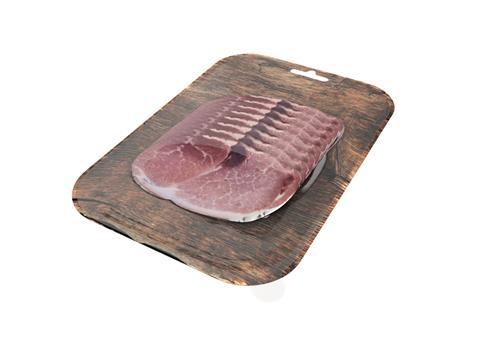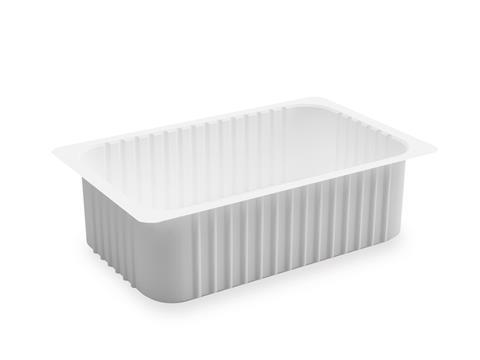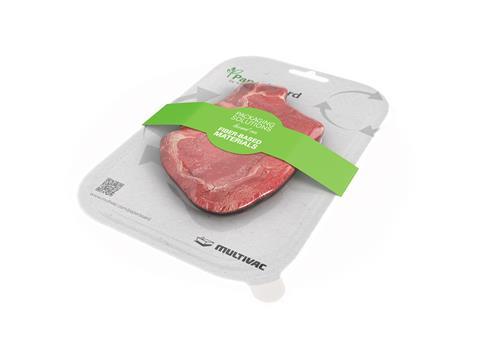
As Stefan Scheibel, Vice President, Corporate Training & Innovation Center, MULTIVAC argues, might the reduction of materials be a potential solution to the issue of plastic waste?
“Multiple-use instead of single-use” is the central approach of the EU Plastics Strategy and its current packaging legislation, initiatives that are aiming to reduce packaging waste through an effective closed-loop system. Other aspects include preventing the overuse of plastics by employing alternative packaging materials, as well as reducing the consumption of plastic material in the production of packs. This cannot be achieved without plastics altogether, since plastic packaging makes a valuable contribution (particularly in the food sector) to product protection and, therefore, to the protection of consumers.
The most important requirements of the EU Plastics Strategy and the packaging legislation which was introduced at the beginning of 2019 relate primarily to the introduction of a closed-loop system for plastic packaging, as well as the development of fully recyclable packs and an increase in the proportion of recycled material used in the production of packaging materials. Today, plastic packs contribute 60% of the typical end user's plastic waste. And plastics production continues to rise massively. Since the 1960s it has increased twenty-fold and is estimated to double again in the coming two decades.
The time frame for implementing these statutory framework conditions is ambitious: by 2025 ten million tonnes of recycled plastic are due to come into use in the EU as part of a voluntary agreement. As regards the recyclability of packs, the aim is to increase the quota by 2030 to more than half of all plastic packs within the EU, while in Germany all packs are due by then to be either fully reusable or capable of being easily and cheaply recycled. In parallel with this, the new packaging legislation for recyclable materials envisages a conversion rate of 55% by mass for multi-layer and composite materials, and this is due to rise from 2022 to a rate of 70%.
However, a reduction in packaging volume is a very practical route - and its effect should not be underestimated. The EU Strategy Paper is now increasingly reinforcing the view that oversized packs or unnecessary packaging should be systematically avoided in the future. This means that only as much packaging material as absolutely necessary should be used.

How much packaging material is absolutely necessary for producing packs which guarantee the optimum product protection?
As a basic principle, it is the role of packs to provide product protection throughout the supply chain – and they are essential for the logistics process. In the food industry plastic packaging also makes a very considerable contribution to saving resources, since the food products can be utilised better and their shelf life extended significantly throughout the logistics chain. Plastic packs also prevent the loss of aroma and nutrients in meat, sausage, cheese, fish, fruit, vegetables and bakery products. Packaging significantly influences purchasing decisions at the point of sale due to factors of feel, colour, shape, and material, making it a strategic marketing instrument and an important criterion in product differentiation.
But, the reduction in the volume of packaging material does not necessarily mean that compromises must be made in product protection, pack quality, marketing or the "shopping experience". Thanks to modern machine and packaging technology, it is possible today to develop pack designs which provide optimum product protection and maximum pack appeal, while at the same time offering lower material input.
In principle, there are two routes to significantly reduce the consumption of packaging material – on the one hand by developing an appropriate pack design, and on the other by using suitable machine technology in the pack manufacturing process.
Material savings by optimising pack design
As already mentioned, the first and most important aim is to avoid oversized packs. The shape and size of every pack should basically be matched as ideally as possible to the particular product. MULTIVAC's concepts for format change make it quick and easy to match the individual format to the pack size that is actually required. This enables overpackaging with smaller products to be avoided and thereby saving packaging material.

The volume of packaging material can also be reduced by the use of thinner thermoformable films. Materials can be used, which have comparable barrier properties despite their reduced thickness, and these provide the same product protection as thicker materials. By using a suitable pack design, the same rigidity and pack functionality as with thicker materials can be achieved. These design features include the use of stabilising ribs on the side walls of the pack, as well as modifying the shape in the corners and on the pack base.
Another aspect is the forming process used during thermoforming packaging. By using alternative forming methods, the material flow in the forming die can be optimised, which means that thinner materials can be used without compromising product protection. Examples of this are so-called plug assist forming or explosive forming. In the case of explosive forming, better forming can be achieved by rapid pressure build-up in the forming die, since the film material is distributed more quickly and evenly than with a standard forming system. By combining explosive forming with plug assist, this positive effect can be amplified even more, enabling up to 20% thinner films to be used while maintaining the same forming quality.
Another approach to reducing the volume of packaging material is to use a different packaging concept. Examples of this are vacuum skin packs and folded packs. When producing vacuum skin packs, the materials used have the optimum barrier properties despite the thinness of the materials, which means they provide the optimum shelf life, as well as reducing packaging volume. If the skin film is used in conjunction with a carrier material made of paper fibre, a large part of the pack can be put into the recycling stream, after the PE sealing layer has been separated from the cardboard backing. If one looks at the folded pack, this can be an attractive alternative to the traditional thermoformed pack made of rigid film, if one is, for example, packing sliced sausage or cheese – and it has a significantly smaller packaging volume. Another possibility for reducing packaging material is to run foamed materials, which have a much smaller use of plastic due to their lower density. Today, mechanically foamed APET films are available, which only have a weight of around 25% of that for compacted films.
When changing the packaging concept, it is, however, necessary to take marketing and logistical aspects into consideration, since different forms of packaging may handle and store differently, and there may also be differences in retail presentation.
MULTIVAC will be displaying a range of products at interpack 2020. Interested parties can read more about this here.















